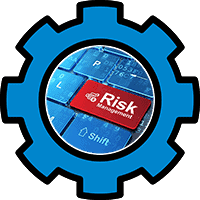Comprehensive Integrated Risk Management Solutions are available for all the world’s standards!
Table of Contents
ToggleOur risk assessment modules all participate in auto-mapping to the global compliance frameworks, saving you time and trouble. Even better, our real-time scoring, reporting, and dashboards help you stay current and compliant.
Build your own risk module easily, or use our preconfigured inventory covering:

Third-Party Risk Assessments
A third-party risk assessment is an analysis of vendor risk posed by an organization's third-party relationships along the entire supply chain, including vendors, service providers, and suppliers. Risks being considered include security risk, business continuity risk, privacy risk, and reputational risk.
Modules include:
- Site Visit Security Risk Assessment
- Third-Party Risk Assessment & Management
- Physical Security Risk Assessment
- Vendor Risk Management
- Use our creation tools to build your own!
What are you waiting for?
You are just a conversation away from putting the power of Continuum GRC to work for you.
Contact us using the form below or calling us at 1-888-896-6207 for immediate assistance.
To reduce spam submissions, we’ve implemented email verification for access to this form.
How it works:
- Enter your email address below.
- We'll send you a unique verification link.
- Click the link in the email to confirm your identity and gain access to the form.
This ensures only verified users can proceed, helping keep responses genuine and spam-free.
Thank you for your cooperation! If you don't receive the email, check your spam folder or request a new link. If you prefer to speak with a REAL HUMAN, please call our number listed at the top of this page.
Frequently Asked Questions
Third-party risk assessments evaluate the cybersecurity postures of vendors to mitigate risks such as third-party breaches, incorporating advanced solutions like zero trust architectures to protect against sophisticated cyberattacks in supply chains.
With growing dependencies on third parties, supply chain security is critical in third-party risk assessments to uncover vulnerabilities, including IoT-related attack surfaces and rising vendor risks that could lead to broader organizational exposures.
Regulatory compliance trends, such as those involving sanctions evasion and data privacy laws, require third-party risk assessments to include thorough due diligence, ensuring alignment with evolving standards for AI, cybersecurity, and supply chain oversight.
Zero trust principles in third-party risk assessments involve verifying every access request from vendors, minimizing risks from cloud environments, OT/IoT devices, and potential supply chain compromises through strict identity and access controls.
Transparency in third-party risk assessments builds trust by providing clear visibility into vendor decisions, risk scores, and compliance mappings, especially in AI-facilitated processes, helping organizations avoid reputational damage from undisclosed threats.
To mitigate third-party breaches, risk assessments should include comprehensive audits, AI-driven anomaly detection, and transparency measures to identify hidden risks, such as those from rushed software integrations or poor data security.
Some of the Benefits
A third-party risk assessment delivers several compliance benefits by helping organizations identify, manage, and mitigate risks associated with vendors, suppliers, and other external partners. Here are the key benefits:
- Regulatory Compliance: Ensures third parties adhere to relevant laws and regulations (e.g., GDPR, HIPAA, CCPA, SOC 2). Assessments verify that vendors meet industry standards, reducing the risk of non-compliance penalties or legal issues.
- Risk Identification and Mitigation: Uncovers potential vulnerabilities in third-party operations, such as data security weaknesses or inadequate controls, allowing proactive measures to prevent breaches or compliance failures.
- Improved Due Diligence: Provides a structured process to evaluate third-party practices, ensuring they align with your organization’s compliance requirements and policies before onboarding or continuing partnerships.
- Data Protection and Privacy: Assesses how third parties handle sensitive data, ensuring compliance with data protection laws. This minimizes the risk of data breaches or misuse that could lead to regulatory fines.
- Audit Readiness: Generates documentation and evidence of third-party compliance, streamlining internal and external audits. This demonstrates to regulators that your organization has robust oversight of its supply chain.
- Reputational Protection: By ensuring third parties meet compliance standards, assessments reduce the likelihood of incidents that could damage your organization’s reputation due to a vendor’s non-compliance.
- Contractual Alignment: Verifies that third-party contracts include necessary compliance clauses, such as data security requirements or incident reporting obligations, reducing legal and financial risks.
- Continuous Monitoring: Enables ongoing oversight of third-party compliance, ensuring they maintain standards over time and adapt to new regulations, reducing long-term risk exposure.
By systematically addressing these areas, third-party risk assessments strengthen an organization’s compliance posture, reduce liabilities, and foster trust with stakeholders.

